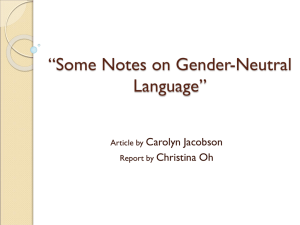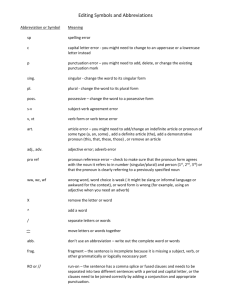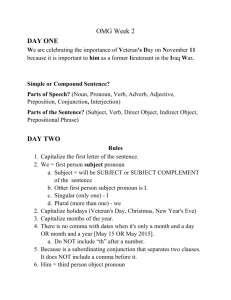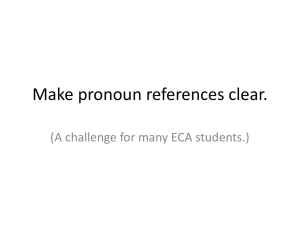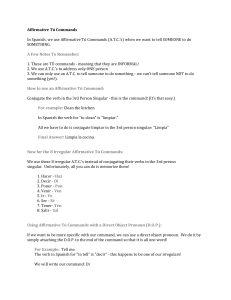Some Notes on Gender-Neutral Language
advertisement
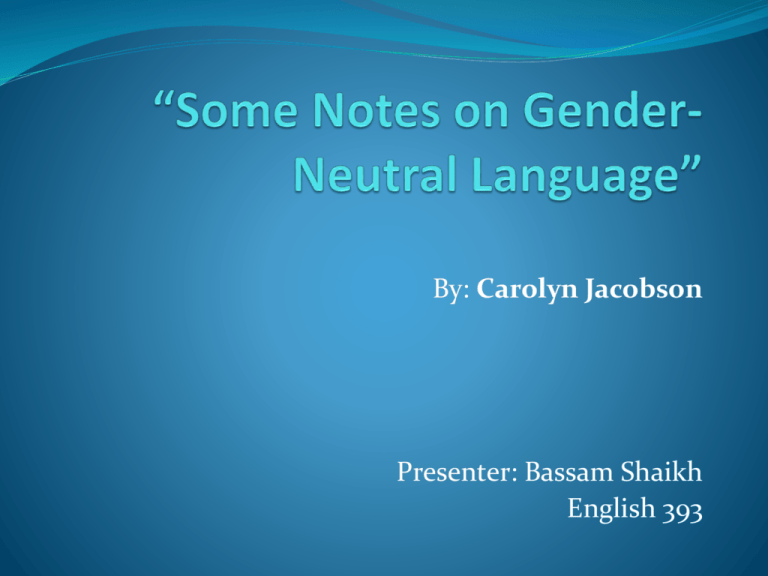
By: Carolyn Jacobson Presenter: Bassam Shaikh English 393 Introduction Practice of assigning masculine gender to neutral terms reflects the society in which the language evolved. Historically, English evolved in a male dominated patriarchal society. English is always changing and one can notice the shifts that have occurred in the language in past 100 years The term “Man” “Man” was a generic term, referring to all humans, but has narrowed to become a word referring to adult male human being. For example, an Anglo-Saxon writer refers to a seventh-century English princess as “a wonderful man.” Also when Thomas Jefferson declared “all men are created equal”. Modern dictionaries link “man” with males. The Pronoun Problem The first grammars of modern English were written in the 16th and 17th centuries to help the boys from upper class to study Latin. The authors wrote for male audience. The pronouns reflected the male culture dominance. "He" started to be used as a generic pronoun by grammarians who tried to change a tradition of using they as a singular pronoun In 1850 an Act of Parliament gave official sanction to the recently invented concept of the "generic" he. Solving the Pronoun Problem They as a Singular--Most people, when writing and speaking informally, rely on singular they as a matter of course: "If you love someone, set them free" (Sting). Using He or She. Eliminating Pronouns- instead of “a first grader can feed and dress himself”, you could write, "a first grader can eat and get dressed without assistance.” He/she or s/he, using one instead of he. The Practical Side Author mentions that this is not about freedom of speech but an issue of audience and awareness. Gender neutral language has gained support among book publishers and professional & academic groups, such as, American Psychological Association and Associated Press. Newspapers like the New York Times and the Wall Street Journal avoid such language. Conclusion English language is becoming more gender neutral as it is evolving. We need to be conscious of the expectations of workplaces where guidelines are given to focus on using gender neutral language. For example, many law journals, psychology journals, and literature journals do not print articles or papers that use gender-inclusive language. Questions?
